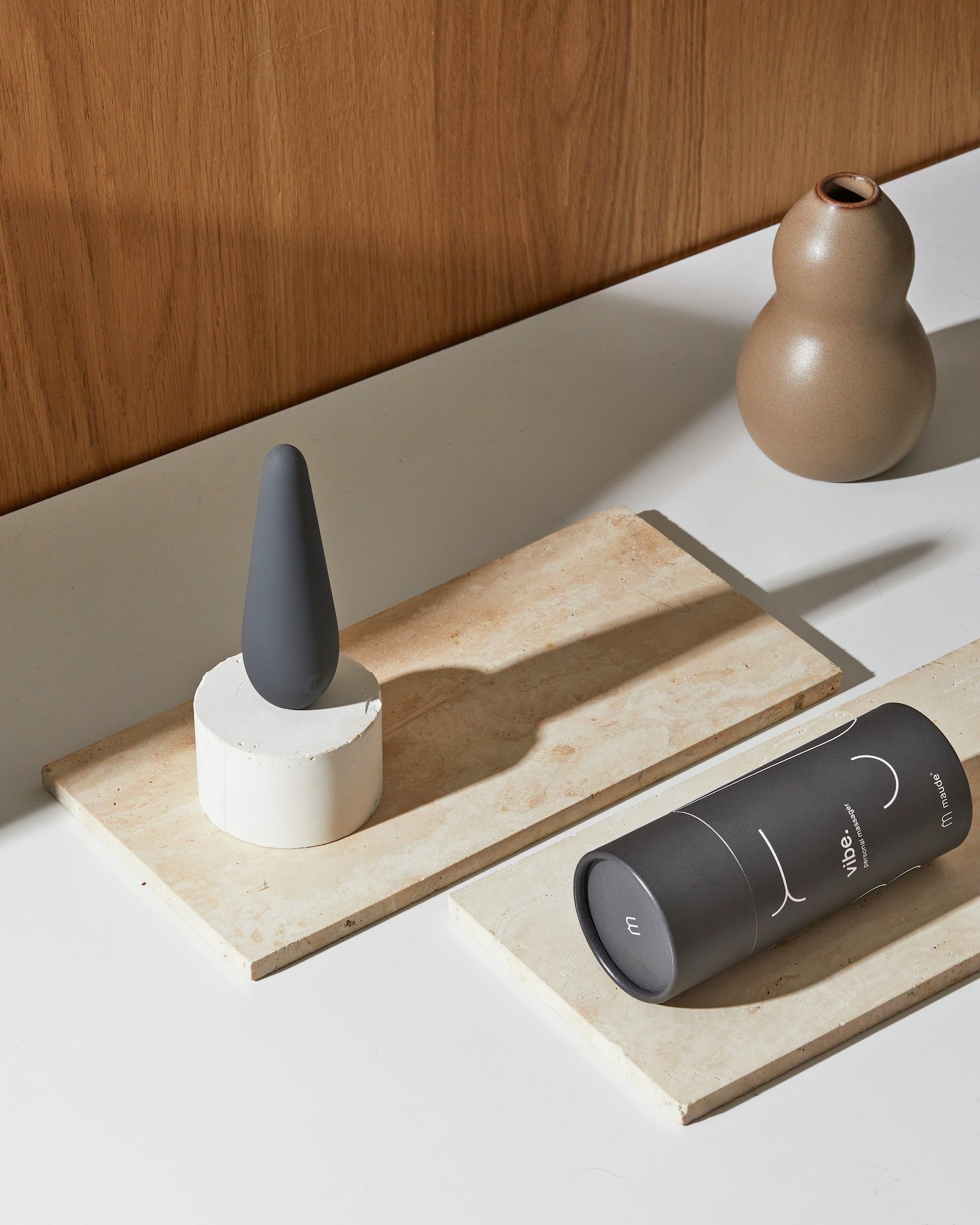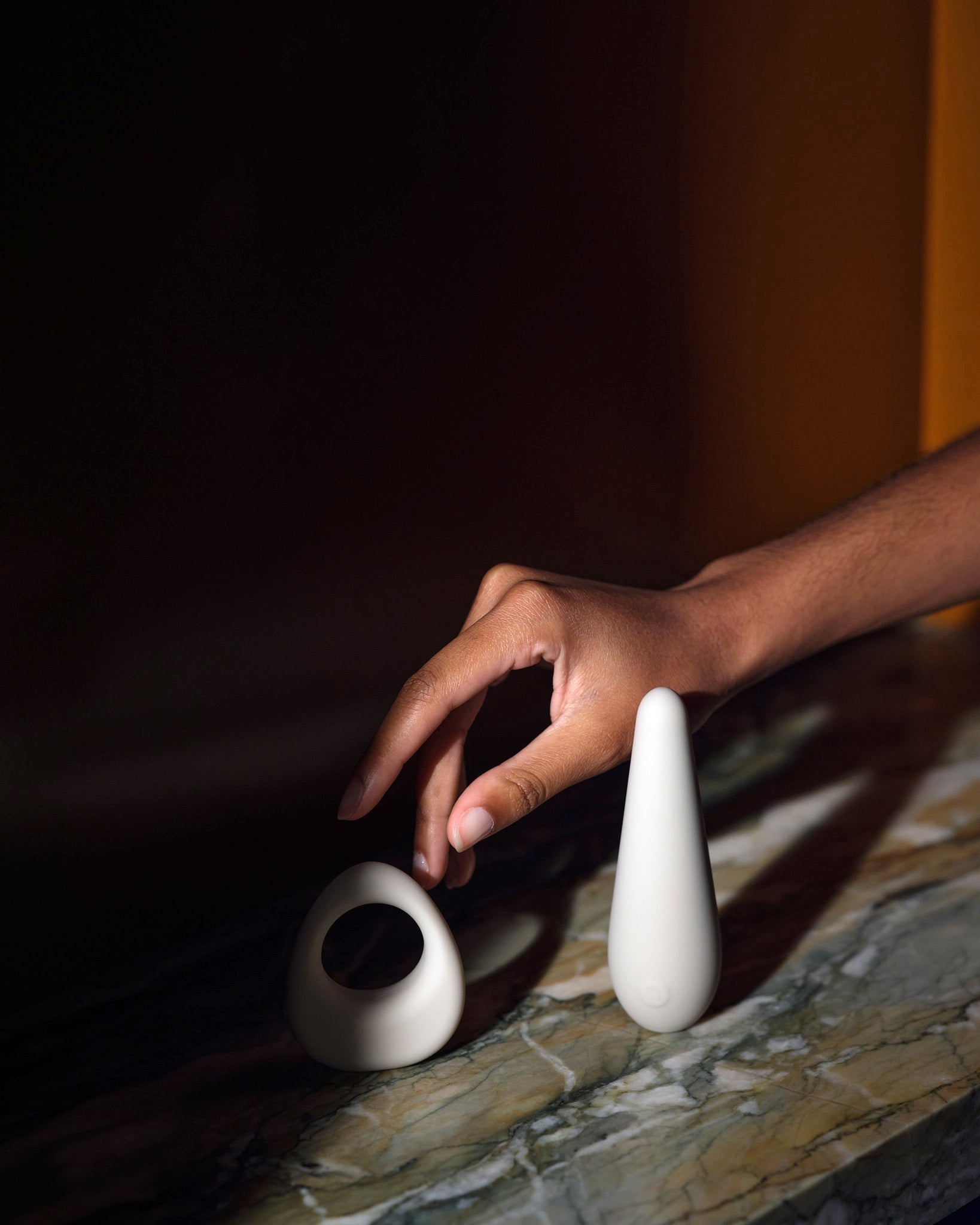How common are vibrators, exactly?

If you have at least one, you’re in the majority.
The science is clear: Vibrators are more than a “sex toy,” but rather an essential tool for sexual wellness. This is why the fact that 53% of American women between the ages of 18 and 60 use one isn’t surprising. It seems surprising that the number isn’t even higher.
This percentage comes from researchers at Indiana University, who published their findings in 2009, releasing the first-ever reported data about vibrator use from a nationally representative sample. Since then, no larger studies have shown a change in this percentage, though as sexual taboos have shifted and online shopping has made vibrators more accessible, it wouldn’t be out of bounds to assume that it’s increased at least a little since then.
Percentage of people who own a vibrator
Vibrators can (and should!) be used by people of all genders—and the researchers at Indiana University found that almost 45% of men between the ages of 18 and 60 have used one, too (again, as of 2009). This research found, across the board, that vibrator use was associated with better sexual function and better diligence with sexual health, with users more likely to have their annual gynecological check-ups than those who didn’t use vibrators.
A 2004 survey, which used a random sample of about 1,600 women aged 18 to 60, found that women ages 25 to 34 were most likely to ever have used a sex toy of any kind, and women ages 55 to 60 were equally likely to have tried one, but half as likely to currently use one. The survey also found, interestingly, that sex toys were more commonly used by women in relationships over single women. Of course, over 15 years have passed since 2004—so that data should also be viewed with a healthy shake of salt.
According to data published by Statista, as of 2017, vibrators were the most commonly owned devices amongst women, with nearly 80% of sex toy owners above the age of 18 owning at least one—even more than the six out of 10 who own at least one form of lubricant.
A 2010 study of 25,294 gay and bisexual men found that half of them have used vibrators, and 86.2% of those had used them for masturbation. In partnered interactions, 65.9% used vibrators during foreplay and 59.4% used them during intercourse. Some research suggests that queer women are more likely to use sex toys than straight women.
Vibrator ownership has likely increased in recent years, too. As pop culture has made sexual wellness—including the use of vibrators—less of a taboo, it’s fair to assume that more people have gotten their hands on a device. More recent data from Statista published in 2021 shows that 65% of female consumers own at least one kind of sex toy. In the next five years, the global sex toy market is expected to grow to be worth $52.7 billion, from about $34 billion (there’s also the fact that sex toy sales were booming at the beginning of the pandemic).
Vibrators and sexual health
One factor that can lead to an increase in vibrator use, especially among an older demographic, is the fact that they’re a useful tool for people with vaginas experiencing sexual dysfunction. Many gynecologists even prescribe them for older patients because they help stimulate blood flow to the vagina, which keeps lubrication glands well-primed.
A 2020 study published in the journal Sex Relation Therapy that vibratory stimulation is an accessible treatment for sexual dysfunction for people with penises and those with vaginas. For those with penises, it can help combat erectile dysfunction. For everyone, it can help reduce anorgasmia (chronic difficulty reaching orgasm after ample sexual stimulation) and increasing the feeling of sexual desire. If you have a hard time reaching a climax for whatever reason, it doesn’t hurt to reach for a vibrator to help out.
Vibrators as a substitute for a partner
Charlotte from Sex in the City isn’t the only person who’s ever contemplated putting a vibrator ahead of her love life—but it’s a misguided assumption to think that they’re truly a replacement for a partner. Sure, they can be, if you’re single, long-distance, or not having sex for any reason; but using a vibrator and having sex with a partner is not mutually exclusive.
Using a vibrator during sex, after all, is not an indication that your partner just isn’t getting you off well enough on their own. A 2015 study from the University of Guelph, Ontario, surveyed 49 men between the ages of 25 and 58 in heterosexual relationships about vibrator use, finding that they did not feel emasculated by the devices. Rather, their own experiences of pleasure were tied to their partners’ pleasure, as well as the addition of novelty in sexual encounters.
Today, we know there’s no age cut-off for vibrator use and there’s no shame in using one whether you have a partner or not. Pleasure is a right for everyone, and with this simple tool, it’s easier to prioritize your sexual wellbeing. That’s something we can all stand for.



